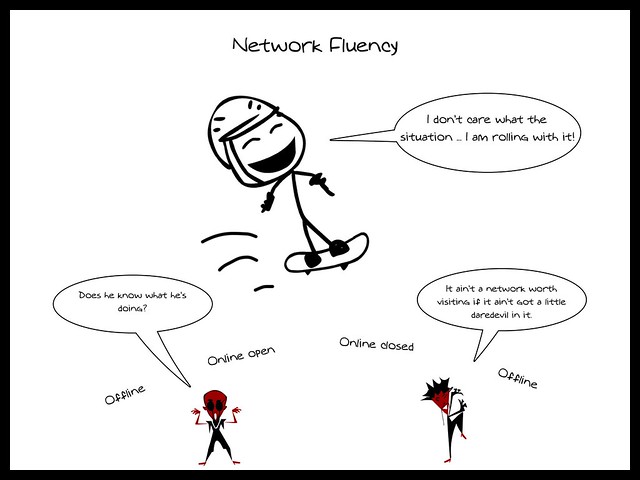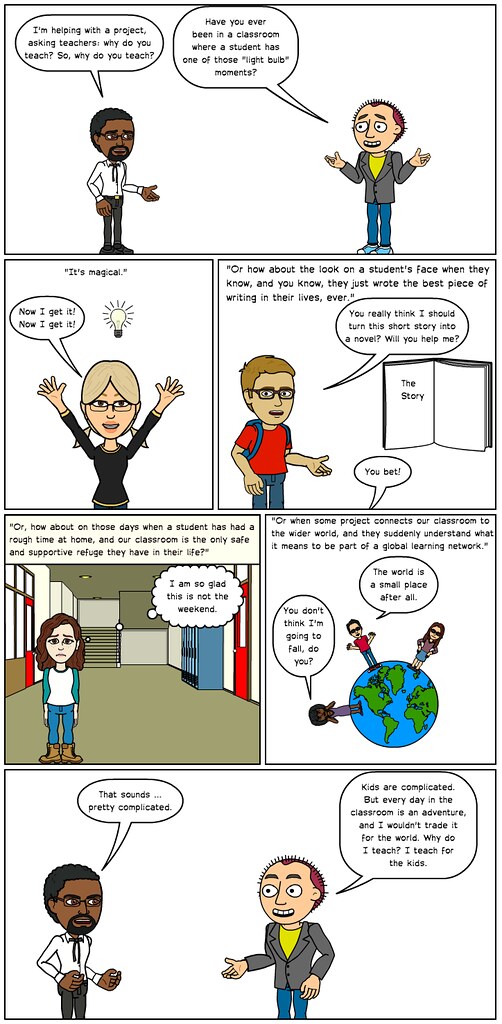
I am just starting up a mandatory graduate level course by our state’s Department of Education about how all teachers can best reach our English Language Learner students through Sheltered Immersion techniques. I won’t say I am overly-excited about the amount of work that will be expected of us in the coming weeks/months, nor am I all that thrilled that we have to use Blackboard as our LMS (hate it), but the class discussions so far have been interesting.
I’m making a leap here (and it may be a bit of metaphorical ramble, so bear with me) but the theme of Network Fluency in the Connected Courses has me thinking of some parallels of thought. Just as I am learning more techniques for helping my ELL students navigate different languages, academic content, cultural expectations and learning platforms, so too are we in Connected Courses considering the “fluidity” of learners across online spaces. Being comfortable in one space/network does not translate into being fluent in the other space/network.
This comes to mind for me as I think about watching the flow on Twitter, or in the blog roll of Connected Courses, and how intriguing it has been to watch university folks move over some of the same ground as we have done in our Making Learning Connected MOOC, yet from a slightly different angle — of syllabus design, of institutional barriers and/or support, of wondering whether pushing barriers will hurt/enhance academic opportunities. The language and discourse of Academia has a different nuance to it, and the idea of Network Fluency is not just ‘Do I know how to use this space?’ but also ‘Can I project an identity into this space that has value for me?’
Right?
Early on, I declared that I would only be observing the Connected Course. That didn’t happen (laugh track). That didn’t happen because the facilitators made me feel welcome and important to the conversations. I didn’t feel talked down to because I was “a sixth grade teacher” in the midst of university professors. A space at the table was made for me. Lurker, no more (although we wrote extensively about the value of observing from afar for learning and even about that term itself).
Over the course of a typical week, I realize, I am bouncing around many networks, most with distinct styles and certain lexicons of their own. From the physical networks embedded in my school day, to the online networks whose tone shifts depending upon the platform (Twitter, etc.) and the people who inhabit those spaces with me (serious? humorous? inbetween?). The way I write in various National Writing Project networks is slightly different from the way I write in others. Sometimes, I connect in with more personal writing via Slice of Life.
We become fluent in these networking spaces by learning and participating, and with assistance of others, just as my ELL students are doing in my classroom– watching, reading signs, paying attention to cultural markers, taking chances, finding confidence and then, establishing a voice that is valued. The social capital that is discussed in Connected Courses is the connections between those in the space, where trust is the glue that holds it all together. In the Connected Courses, I trust that my views as an elementary teacher will have value. In my classroom, I hope my students trust our classroom community enough to participate and take chances with their thinking, to push the boundaries.
If those things fall apart or never quite take hold at a comfortable level in my own networks, at least I have the opportunity to leave the spaces I am part of (well, except for things like the ELL training). I mostly pack up and say, that’s not for me.
My students? They can’t do that (another difference with university folks, where students can drop out). My young students’ network/language fluency depends upon me to construct scaffolding for them, so they can not just enter the conversations, but so they can be facilitators in those discussions, too, bringing the best of what they offer to the forefront of our collective learning.
If that sounds just like the way we think about the networks we wander into out here, in the virtual spaces, then I have made that thematic leap from my classroom to my networks clear. If not, eh, sorry.
Peace (in the think),
Kevin

